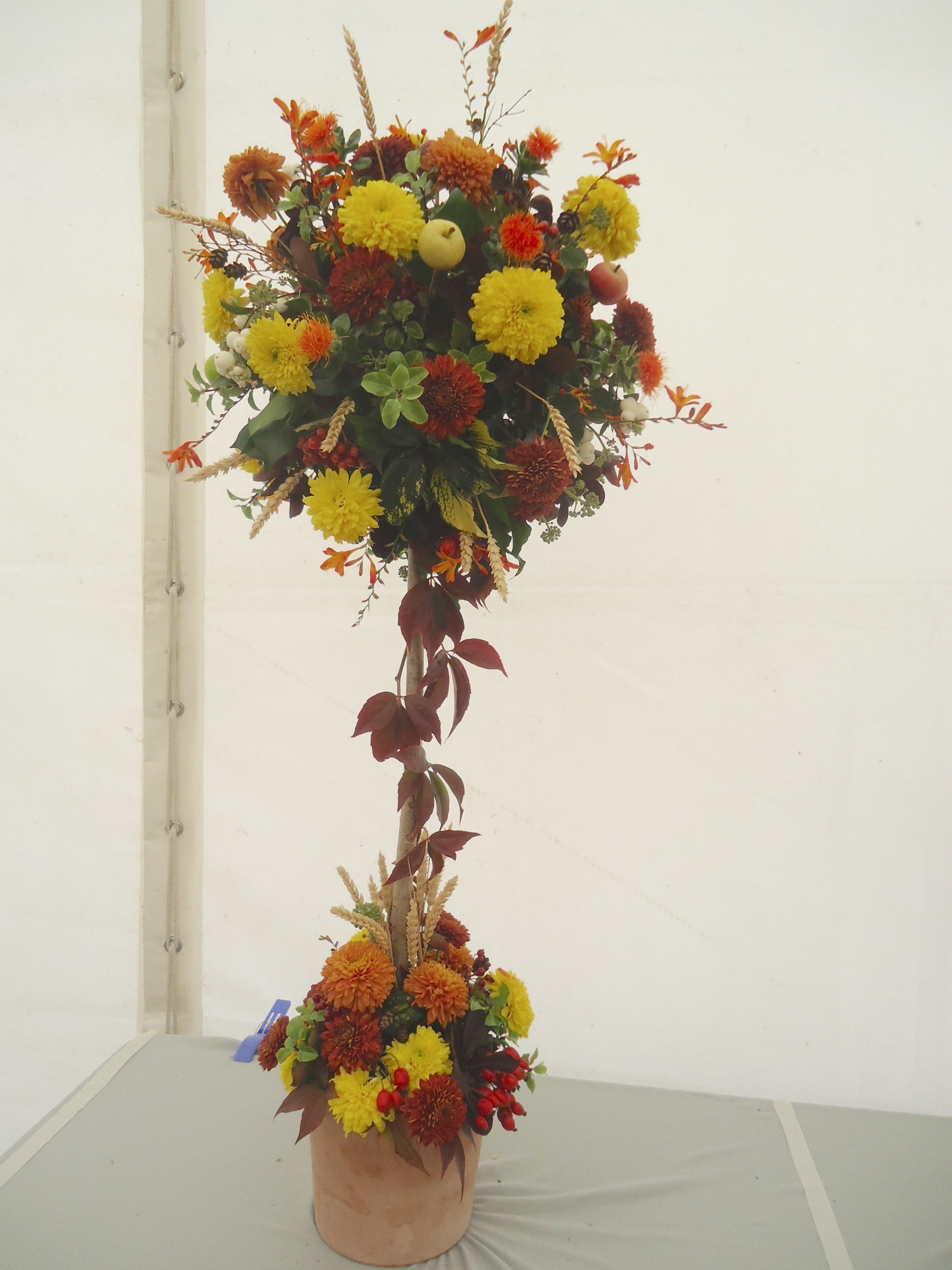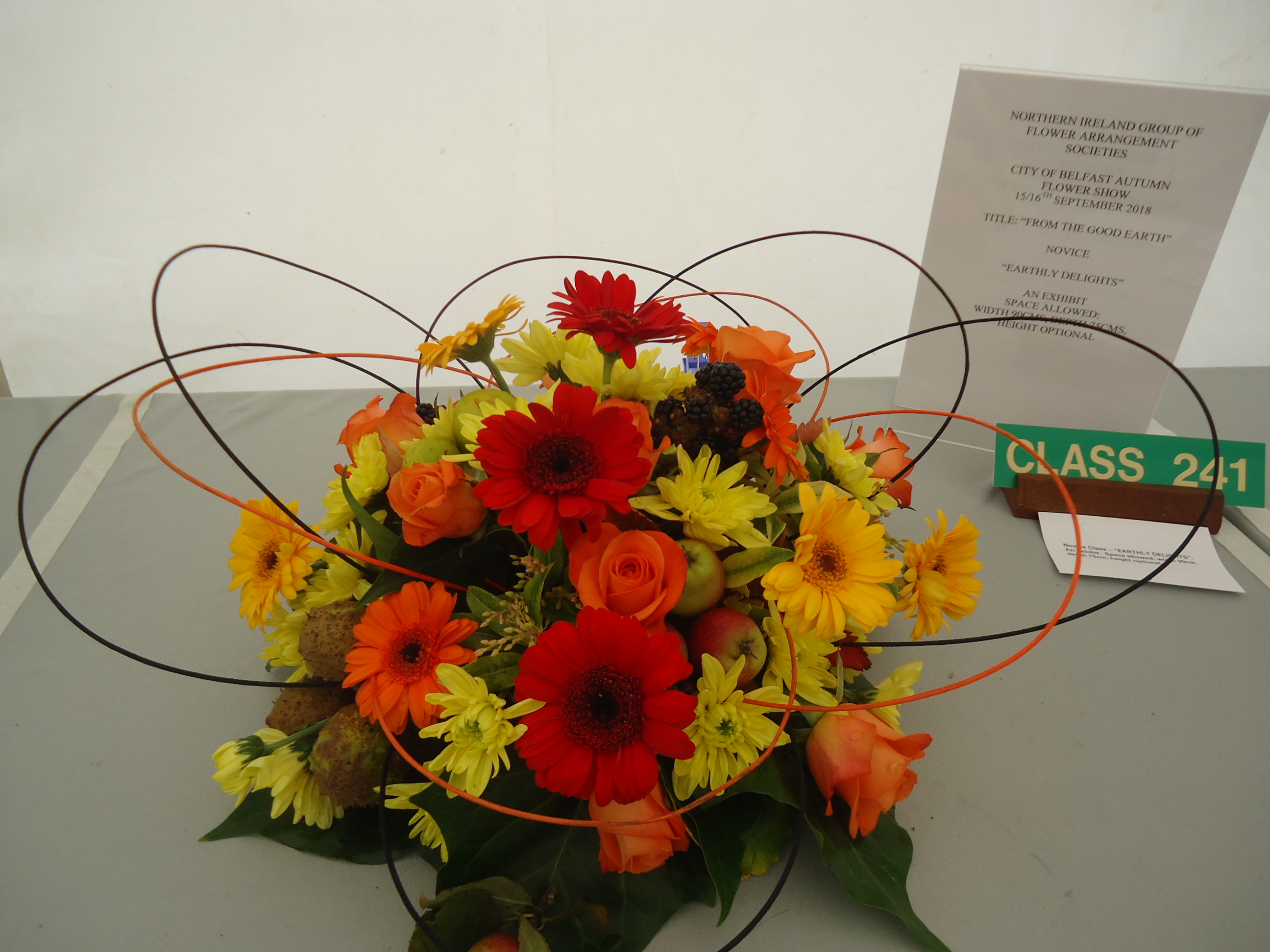Autumn Flair, part two
Yesterday I saw a film after I walked around the autumn fair for a while. First, some of the entries in the flower arranging contest:
I should have noted the judges’ comments on each entry. The judges are very big on whether the top and bottom are in proper proportion and whether the leaf ratio is appropriate and so on. The theme was “Eats, shoots, and leaves.” Some of the comments found fault with the proportion of edible elements. I find these comments awfully picky when presented with such lovely arrangements, however scoring has to be based on something.
After I went to the fair, I ran into one of the Swing Belfast dancers and we had a coffee. While waiting for the film, I ran into two people from the church I used to attend. After the film, I ran into two more Swing Belfast people. I always get a kick out of such chance encounters.
So, the film. “A Mother Brings Her Son to be Shot.” A documentary about a punishment shooting in a low-income Catholic neighbourhood in Derry. In such neighbourhoods, the police are seen as holdovers of Protestant paramilitaries, which is unfair, but very handy if you are a holdover from a nationalist paramilitary. So some remnant of the IRA is The Law in these neighbourhoods and deals with drug dealers by shooting them in the legs. A 19-year-old’s mother took him to his shooting appointment--he had no idea it was coming--in order to prevent a worse outcome for her son. She tended to him after he was shot. Imagine. Well it’s unimaginable.
The documentary followed the family for five years after the shooting, during which time the 19-year-old’s father--a former IRA member caught bombing a police station--was released from prison. And soon thereafter the father was also shot in the legs. Because he said the wrong thing to the wrong person in a bar. Or something. Who knows. The problem with the extrajudicial vigilante system is there is no check on their power, no accountability. I can’t imagine the violence against women in such communities. Men wearing balaclavas who patrol streets with rifles don’t necessarily become cuddly once they get home. Especially if they know their partner won’t call the police.
Family members in the film say two particularly interesting things. That the IRA hits up drug dealers for money and only selectively shoots them. It isn’t protecting the community from drugs, as claimed, only picking winners. Secondly, the young men in the targeted family wish the Troubles would return. Maybe because it was simpler when the enemy was outside your community. But also because there are no jobs in this community--Derry is an economic backwater. There is no hope. In such environments, young men look to be part of a gang to imbibe a sense of power and identity. You see it all over the U.S. So they wish the entire society to regress into violence and fear to give them a sense of purpose. Sigh.
The film maker answered questions after it ended. She admitted to being naive, to realising her subjects were often lying to her. She said her film was not journalism because she was not equipped to sort fact from fiction. It was an attempt to give the people in the Creggan an opportunity to tell their stories. It’s a bit disorienting to not be able to sort out the competing claims in the film. But at least she was honest about the ambiguities, which most documentaries would not tolerate.
9-16


